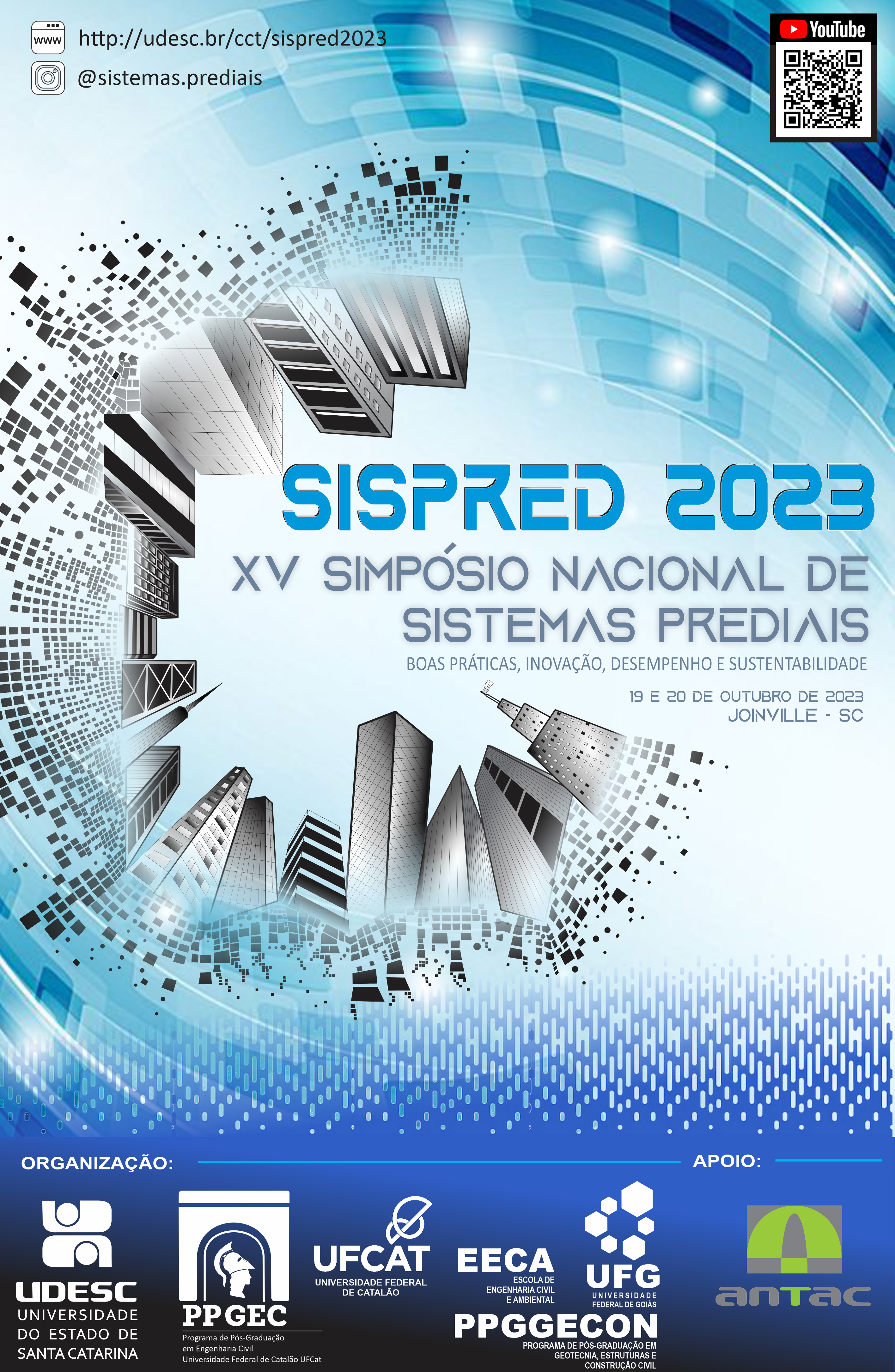INFLUÊNCIA DE SISTEMAS PREDIAIS DE APROVEITAMENTO DE ÁGUA DE CHUVA NO AMORTECIMENTO DO ESCOAMENTO DE ÁGUA PLUVIAL PROVENIENTE DE ÁREAS EDIFICADAS
DOI:
https://doi.org/10.46421/sispred.v3.2971Palabras clave:
Aproveitamento de água de chuva, Amortecimento, Escoamento superficial, Drenagem na fonteResumen
RESUMO: O objetivo deste trabalho consiste na avaliação de diferentes cenários de volume de reservatórios de aproveitamento de água de chuva e sua influência no atendimento aos perfis de consumo de água de chuva de um edifício residencial multifamiliar e no amortecimento de escoamento superficial, gerado pelas áreas impermeabilizadas da edificação. Para a análise utilizou-se séries históricas de chuvas comparadas as demandas de água de chuva consumida em um edifício real situado em Goiânia – GO. Por meio do trabalho, pode-se observar, a partir da análise dos resultados que apenas o reservatório concebido para suprir 100% de demanda (1.748,70 m³), contabilizando todo o período de estiagem, foi capaz de promover a maior redução no volume de água escoada, resultando em cerca de 89,41% de amortecimento e 10,59% de escoamento por extravasamento. Por outro lado, um reservatório com tais proporções, na maioria dos casos, representa uma estrutura inviável técnica e economicamente. Quanto aos demais volumes de reservatórios estudados, observou-se que quanto maior o reservatório maior a capacidade de retenção e amortecimento do hidrograma de escoamento superficial. Desta forma, seria mais viável a implantação de reservatórios menores em conjunto com sistemas de drenagem na fonte, tais como poços e trincheiras de infiltração.
Descargas
Citas
BRASIL. Constituição (2017). Decreto nº 13501, de 30 de outubro de 2017. Brasília, DF.
DORNELLES, F. Aproveitamento de água de chuva no meio urbano e seu efeito na drenagem pluvial. Tese de doutorado. Programa de Pós-Graduação em Engenharia de Recursos Hídricos e Saneamento Ambiental da Universidade Federal do Rio Grande do Sul. Porto Alegre – RS. 219p. 2012.
HAMEL, P.; DALY, E.; FLETCHER, T. Source-control stormwater management for mitigating the impacts of urbanisation on baseflow: A review. Journal of Hydrology – Elsevier. Vol. 485, 201-2011p. 2013.
MENEZES, F. C. M e TUCCI, C. E. M. Alteração na relação entre densidade habitacional x área impermeável: Porto Alegre – RS. Rega – Revista Gestão de Água da América Latina. V. 9, N. 1, p.19-55, 2012.
REIS R.P.A., ILHA M.S.O., TEIXEIRA P.C. Sistemas prediais de infiltração de água de chuva: aplicações, limitações e perspectivas. [REEC] Revista Eletrônica de Engenharia Civil, Vol. 7, N. 3, Goiânia – GO, 2013.
RODRIGUES, José Carlos Moreira Resende; NEVES, Mário Valente. Sistemas de Aproveitamento de Águas Pluviais: Dimensionamento e Aspectos Construtivos. 2010. 112 f. Dissertação (Mestrado) - Curso de Engenharia Civil, Faculdade de Engenharia, Universidade do Porto, Porto, 2010.
SOLTO, S. L.; REIS, R. P. A.; CAMPOS, M. A. S. Impact of Installing Rainwater Harvesting System on Urban Water Management. Water Resources Management. Vol. 37, p.583-600, https://doi.org/10.1007/s11269-022-03374-z.
STEPHENS K. A.; GULIK, T. V. D.; MACLEAN L.; VON EUW, E. Re-inventing urban hydrology in british columbia: runoff volume management for watershed protection. (2003) In: Proceedings, National Conference on Urban Storm Water: Enhancing Programs at the Local Level. Disponível em: <http://www.epa.gov/owow/NPS/natlstormwater03/38Stephens.pdf>. Acessado em 20 de junho de 2011.
TRAVER, R. G.; EBRAHIMIAN, A. Dynamic design of green stormwater infrastructure. Front. Environ. Sci. Eng. Vol. 11, n.4, DOI 10.1007/s11783-017-0973-z. 6p. 2017.
TUCCI C.E.M., Gestão de Águas Pluviais Urbanas. Programa de Modernização do Setor Saneamento. Secretaria Nacional de Saneamento Ambiental. Ministério das Cidades. V. 4, 194p. Brasília – DF, 2005.

